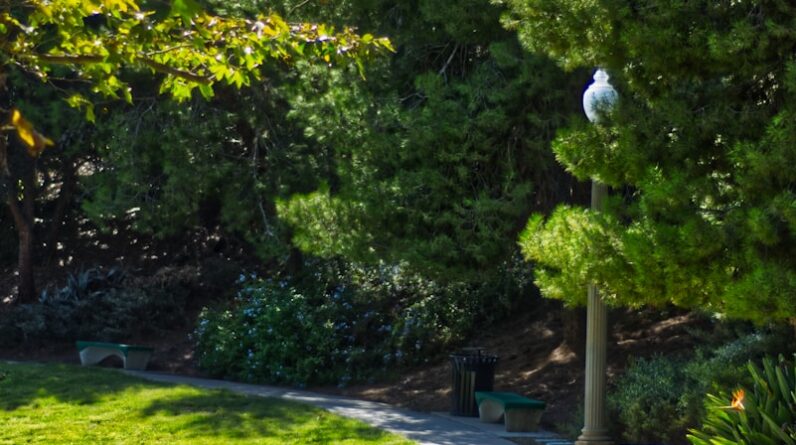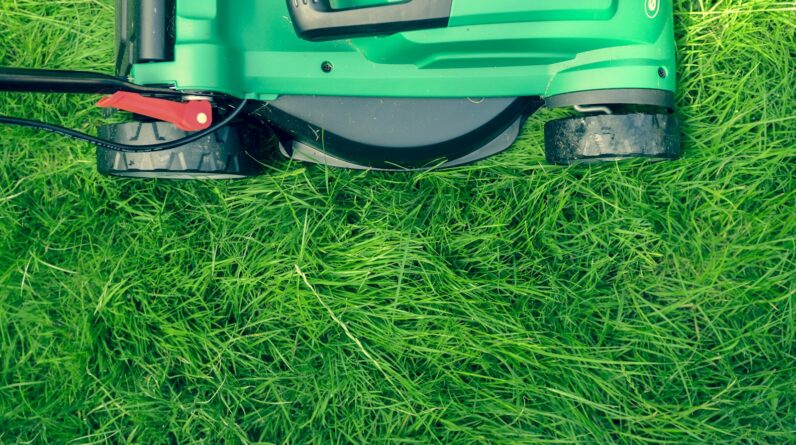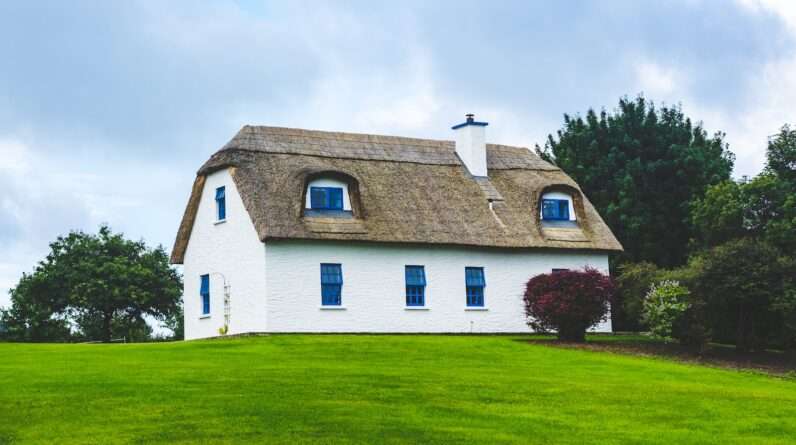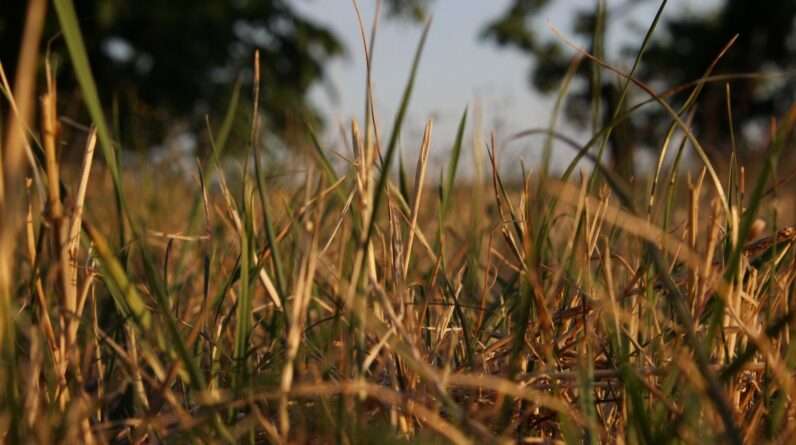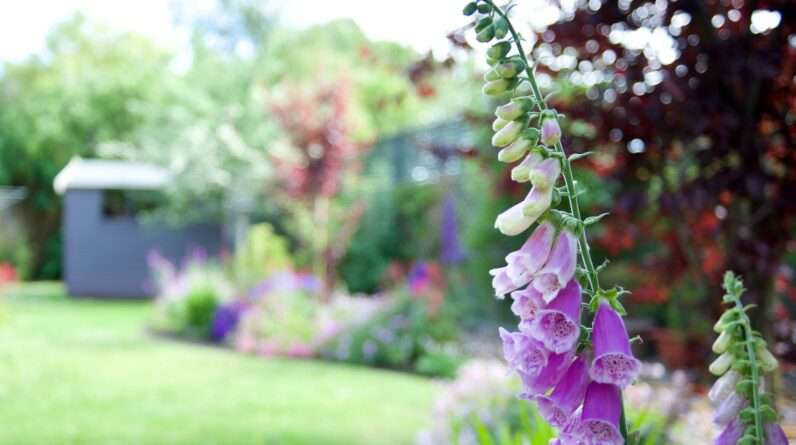
Are you aware of the hidden environmental consequences of traditional lawns?
The lush green grass may seem harmless, but it is actually draining our precious water resources, contributing to chemical pollution, destroying habitats, and causing air and noise pollution. Furthermore, the long-term damage to the soil is often overlooked.
In this article, we will explore the sustainable alternatives to traditional lawns, providing evidence-based insights and informing you about the environmental impact of your landscaping choices.
Key Takeaways
- Traditional lawns require a significant amount of water and contribute to water consumption, while sustainable alternatives like xeriscaping can reduce water usage by up to 60%.
- Chemical usage in traditional lawn care leads to water pollution and harmful environmental consequences, whereas organic fertilizers and integrated pest management strategies offer eco-friendly alternatives.
- Traditional lawns displace native plants, disrupt local ecosystems, and reduce biodiversity, while sustainable alternatives promote conservation of native species and wildlife.
- Air and noise pollution resulting from traditional lawns have detrimental effects on the environment and human health, but proper urban planning and regulations can mitigate these impacts.
Water Consumption: The Hidden Drain on Resources
You should reduce your water consumption to conserve this valuable resource. Water conservation is crucial in maintaining the sustainability of our environment. Traditional lawns require a significant amount of water to stay lush and green, which puts a strain on our water resources. By opting for alternative landscaping methods, you can significantly reduce your water usage. Xeriscaping, for example, is a landscaping technique that focuses on using drought-tolerant plants and efficient irrigation systems. This approach can reduce water consumption by up to 60%.
Another option is to install rain barrels or cisterns to collect and store rainwater for later use in your landscape. By implementing these water conservation strategies, you can help preserve this precious resource for future generations.
Transitioning into the next section about chemical usage, it's important to consider the environmental consequences of traditional lawn care practices.
Chemical Usage: Unmasking the Environmental Consequences
There are numerous chemicals used in traditional lawn care practices, and they can have significant environmental consequences. Many homeowners rely on chemical fertilizers, herbicides, and pesticides to maintain a lush and weed-free lawn. However, these chemicals can leach into the soil and groundwater, posing risks to human health and harming wildlife.
In addition, chemical runoff from lawns can contribute to water pollution, leading to eutrophication and the formation of harmful algal blooms. It's crucial to explore chemical alternatives and embrace eco-friendly practices to mitigate these environmental impacts.
Organic fertilizers, such as compost and natural amendments, can provide essential nutrients to the soil without the harmful effects of chemical fertilizers. Integrated Pest Management (IPM) strategies, including biological controls and cultural practices, can effectively manage pests without the need for toxic pesticides.
Habitat Destruction: How Traditional Lawns Impact Biodiversity
When traditional lawns are established, they often contribute to habitat destruction by displacing native plants and reducing biodiversity. This is particularly significant in the context of urban development, where green spaces are increasingly converted into monoculture lawns. Native plant species are crucial for supporting local ecosystems, as they provide food and shelter for native wildlife, such as birds and insects.
However, traditional lawns often prioritize aesthetics over ecological sustainability, leading to the proliferation of non-native, invasive species that can outcompete and displace native plants. This not only disrupts the delicate balance of local ecosystems but also reduces the availability of resources for native wildlife. The impact of traditional lawns on biodiversity underscores the need for exploring sustainable alternatives that can coexist with urban development without causing further habitat destruction and loss of biodiversity.
Transitioning to environmentally-friendly landscape practices can help mitigate the negative effects of traditional lawns and promote the conservation of native plant species and wildlife.
Moreover, the environmental impact of traditional lawns extends beyond habitat destruction and biodiversity loss. Air and noise pollution are additional unseen effects that can harm the environment.
Air and Noise Pollution: The Unseen Effects on the Environment
Air and noise pollution have detrimental effects on the environment, affecting both human health and the overall ecosystem. These pollutants, often associated with urban areas, are a result of various human activities and can have far-reaching consequences.
Here are some key points to consider:
- Health effects: Exposure to air and noise pollution can lead to respiratory problems, cardiovascular diseases, and even psychological issues.
- Urban planning: Proper urban planning can help mitigate air and noise pollution by implementing green spaces, public transportation, and noise reduction measures.
- Ecosystem disruption: Air and noise pollution can disturb the balance of ecosystems, leading to changes in animal behavior, habitat loss, and a decline in biodiversity.
- Policy interventions: Effective policies and regulations are crucial in controlling and reducing air and noise pollution, ensuring a healthier environment for all.
Understanding the impact of air and noise pollution is essential for sustainable urban development and the well-being of both humans and the environment.
Transitioning into the next section, let's now explore the long-term damage caused by traditional lawns: soil degradation.
Soil Degradation: Uncovering the Long-Term Damage of Traditional Lawns
You need to understand the detrimental effects of soil degradation caused by traditional lawns, as it has long-term consequences for the environment.
Traditional lawns, characterized by closely cropped grass and a lack of biodiversity, can lead to soil compaction, erosion, and nutrient depletion. The constant mowing and use of chemical fertilizers further exacerbate the problem, negatively impacting soil health.
Soil degradation not only affects the immediate area but also has far-reaching consequences. Healthy soil is essential for supporting plant growth, retaining water, and sequestering carbon. Without proper soil health, the ecosystem suffers, leading to decreased biodiversity and disrupted nutrient cycles.
Additionally, soil degradation can contribute to water pollution, as eroded soil particles and chemical runoff can contaminate water bodies.
Therefore, it's crucial to explore sustainable alternatives to traditional lawns that promote soil health and mitigate these long-term consequences.
Frequently Asked Questions
How Can I Reduce Water Consumption in My Lawn Without Completely Removing It?
To reduce water consumption in your lawn without removing it, try implementing lawn water conservation techniques. These techniques can include using drought-tolerant grass varieties, adjusting irrigation schedules, and using mulch to retain moisture.
Are There Any Natural Alternatives to Chemical Fertilizers and Pesticides for Maintaining a Healthy Lawn?
Looking for natural alternatives to chemical fertilizers and pesticides for your lawn? Try organic lawn maintenance methods. They provide a healthier, more sustainable way to care for your lawn without harmful chemicals.
What Are Some Practical Ways to Create a More Biodiverse Habitat Within My Lawn?
To create a more biodiverse habitat in your lawn, consider incorporating native plants and creating pollinator-friendly spaces. These practices can support a variety of wildlife and help to maintain a healthy ecosystem.
How Does the Use of Lawnmowers and Other Lawn Maintenance Equipment Contribute to Air and Noise Pollution?
Lawnmowers emit harmful emissions and contribute to air pollution. Additionally, they generate noise pollution which can be disruptive. It is important to consider sustainable alternatives to minimize these negative impacts on the environment and your surroundings.
What Long-Term Effects Can Traditional Lawns Have on the Soil, and How Can These Be Mitigated or Reversed?
Traditional lawns can have long-term effects on soil, such as soil erosion and compaction. However, these impacts can be mitigated or reversed through sustainable alternatives, like planting native grasses and using organic fertilizers.






